This page is brought to you by the OWL at Purdue (https://owl.english.purdue.edu/). When printing this page, you must include the entire legal notice at bottom.
Tips and Examples for Writing Thesis Statements
This resource provides tips for creating a thesis statement and examples of different types of thesis statements.
Contributors: Elyssa Tardiff, Allen Brizee
Last Edited: 2014-02-10 10:44:43
Tips for Writing Your Thesis Statement
1. Determine what kind of paper you are writing:
- An analytical paper breaks down an issue or an idea into its component parts, evaluates the issue or idea, and presents this breakdown and evaluation to the audience.
- An expository (explanatory) paper explains something to the audience.
- An argumentative paper makes a claim about a topic and justifies this claim with specific evidence. The claim could be an opinion, a policy proposal, an evaluation, a cause-and-effect statement, or an interpretation. The goal of the argumentative paper is to convince the audience that the claim is true based on the evidence provided.
If you are writing a text that does not fall under these three categories (e.g. a narrative), a thesis statement somewhere in the first paragraph could still be helpful to your reader.
2. Your thesis statement should be specificit should cover only what you will discuss in your paper and should be supported with specific evidence.
3. The thesis statement usually appears at the end of the first paragraph of a paper.
4. Your topic may change as you write, so you may need to revise your thesis statement to reflect exactly what you have discussed in the paper.
Thesis Statement Examples
Example of an analytical thesis statement:
An analysis of the college admission process reveals one challenge facing counselors: accepting students with high test scores or students with strong extracurricular backgrounds.
The paper that follows should:
- Explain the analysis of the college admission process
- Explain the challenge facing admissions counselors
Example of an expository (explanatory) thesis statement:
The life of the typical college student is characterized by time spent studying, attending class, and socializing with peers.
The paper that follows should:
- Explain how students spend their time studying, attending class, and socializing with peers
Example of an argumentative thesis statement:
High school graduates should be required to take a year off to pursue community service projects before entering college in order to increase their maturity and global awareness.
The paper that follows should:
- Present an argument and give evidence to support the claim that students should pursue community projects before entering college
1995-2016 by The Writing Lab The OWL at Purdue and Purdue University. All rights reserved. This material may not be published, reproduced, broadcast, rewritten, or redistributed without permission. Use of this site constitutes acceptance of our terms and conditions of fair use .
Many writers use an outline to help them think through the various stages of the writing process. An outline is a kind of graphic scheme of the organization of your paper. It indicates the main arguments for your thesis as well as the subtopics under each main point.
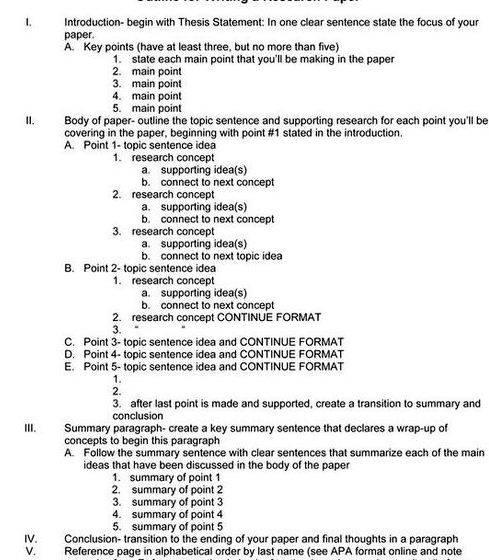
Outlines range from an informal use of indenting and graphics (such as &-, *, +) to a formal use of Roman numerals and letters. Regardless of the degree of formality, however, the function of an outline is to help you consider the most effective way to say what you want to say.
Outlines usually grow out of working plans for papers. For shorter, less complex papers, a few informal notes jotted down may be enough. But longer papers are too big to organize mentally; you generally need a more systematic plan to organize the various parts of the paper. Preparing an outline will help you think over your notes, consider them from several perspectives, and devise/revise an organizational plan appropriate to your topic, audience, and assignment. An outline that accompanies the final draft of a paper can also function as a table of contents for the reader.
When you think of outlines, you usually think of an organizational plan to help you draft a paper, but you can outline at any one of the several stages of the writing process. At each stage, the outline serves a different function and helps you answer different writing questions:
USING OUTLINES IN RESEARCH
While you are researching a topic, you can make a tentative outline–a plan for your paper based on what you are learning from your research. This kind of outline helps you answer the questions: What do I know a lot about already? What do I need to research more?
Here is an example of a tentative outline a student used to begin doing research for an essay comparing three different political theories: neo-Marxism, pluralism, and elitism. The writer already knew about two of the theories, but needed more information about the third.
PRE-WRITING WITH OUTLINES
During pre-writing, you can make a working outline–an outline that guides you in your drafting. It helps you answer the question: How am I going to present my information, given my thesis, my assignment and my audience?
The student who wrote the tentative outline above also wrote the one below before beginning her essay. She wanted to describe the three political theories and then compare them by using each to analyze the government of a particular country, arguing that neo-Marxism is the most useful theory. Her working outline isn’t very formal, but it fulfills the functions of a good outline.
- It supports the thesis.
- It establishes the order and relationship of the main points.
- It clarifies the relationship between the major and minor points.
Here’s what the student’s second outline looked like:
Your job as the writer is to think through the relationship between your ideas. For example, is one idea similar to or different from another? Is one a cause of another? An effect? An example? Is one idea the solution to another? Do two points represent different categories of a larger idea? In other words, do your ideas fall into one of the conventional approaches to thinking about an issue: cause-effect, problem-solution, comparison-contrast, definition, classification? You can use these standard approaches to help you think through your ideas and come up with a logical plan. That plan then becomes your outline.
While drafting, you can make a draft or descriptive outline–an outline that is based on your draft. It describes each of your paragraphs so that you can critique your organization. It helps you answer the questions: Does my draft flow logically from point to point? Have I discussed similar ideas in the same section or do I seem to jump around?
This is a draft outline the above-mentioned student made after writing the first draft of her paper. She summarized the draft, paragraph by paragraph, and then took a look at what the outline revealed.
Paragraph 1 — General introduction to political theories, Thesis: neo-Marxism most useful
Paragraph 2 — Description of neo-Marxism
Paragraph 3 — Description of pluralism
Paragraph 4 — Coalitions of interest groups
Paragraph 5 — Description of elitism
Paragraph 6 — Pluralist analysis of U.S.
Paragraph 7 — Neo-Marxist analysis of U.S.
Paragraph 8 — Strengths of neo-Marxist analysis, Weaknesses of neo-Marxism and Pluralism
Paragraph 9 — Weaknesses of elitism
Paragraph 10 — Conclusion
She noticed that the descriptions of neo-Marxism and elitism were each in a single paragraph, but the description of pluralism took two paragraphs. She decided to be consistent by combining paragraphs 3 and 4. She also noticed that the second half of the paper seemed to jump around from theory to theory, presenting each theory’s analysis and then each theory’s weaknesses. She decided to put the pluralist analysis of the U.S. and the weaknesses of the analysis together in paragraph 6, the elitist analysis and its weaknesses into a paragraph together, and then devote two paragraphs to the neo-Marxist analysis and its strengths and weaknesses.
MAKING AN OUTLINE TO HAND IN
Finally, you may also be required to write a formal outline–an outline that serves as a guide to your paper for your reader. If you haven’t already been making formal outlines, this outline will be a formal version of your previous notes; it lays out your main points and subpoints for your reader. Generally, this kind of outline uses conventions of formal outlining: Roman numerals, letters and indentations. Sometimes this sort of outline can be produced after you have written your essay.
Formal outlines can be written in two ways. In topic outlines, the ideas are expressed in parallel phrases (in other words, they are expressed in the same grammatical form–as noun phrases, as verb phrases, etc.). Topic outlines have the advantage of being brief. In sentence outlines, on the other hand, the ideas are expressed in complete, though not necessarily parallel, sentences. Sentence outlines give the reader a clearer idea of what you will argue.
Regardless of the kind of formal outline you choose, convention states that you begin with a statement of your thesis and indicate increasing levels of support in this order: I. A. 1. a. (1), (a). In scientific papers, however, a decimal system is also commonly used. A topic outline follows:
Thesis: Among the pluralist, elitist, and neo-Marxist political theories, neo-Marxism provides the most powerful analysis of the current political scene.
Notice in a formal outline, whenever a point is subdivided, there are at least two subpoints. Logic and convention state that when you divide a point, you can divide it into no fewer than two subpoints.
Remember, depending on how your research or writing is going, you may need to make use of any or all of the outlines described in this article.
Produced by Writing Tutorial Services, Indiana University, Bloomington, IN
wts/shtml_navs/iub.jpg” />
Writing Tutorial Services
Center for Innovative Teaching and Learning
Wells Library Learning Commons, 1320 E. Tenth St. Bloomington, IN 47405
Phone: (812) 855-6738
Comments




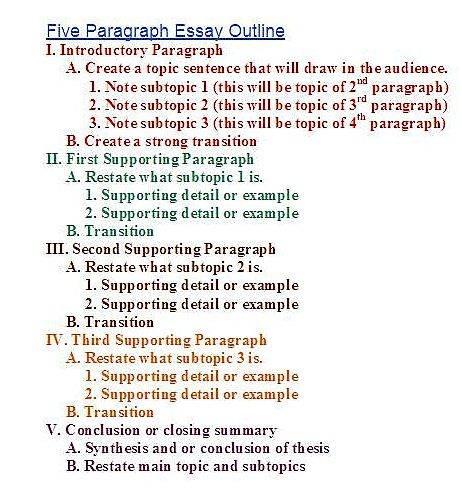

 Writing a reflection paper on a article
Writing a reflection paper on a article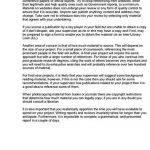 Writing a literature review for thesis paper
Writing a literature review for thesis paper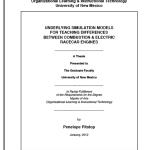 Writing abstract for thesis paper
Writing abstract for thesis paper Difference between thesis and dissertation paper help
Difference between thesis and dissertation paper help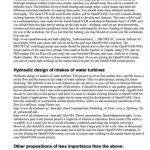 Writing a masters thesis paper
Writing a masters thesis paper






